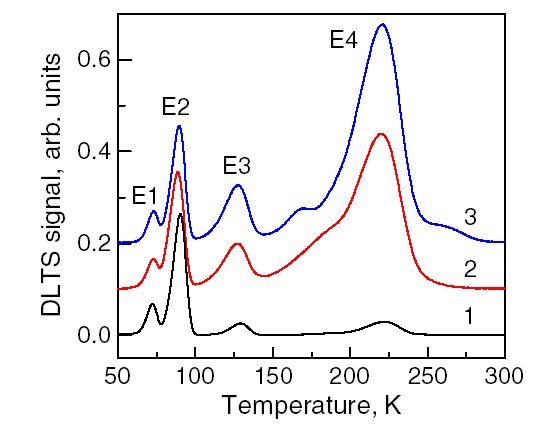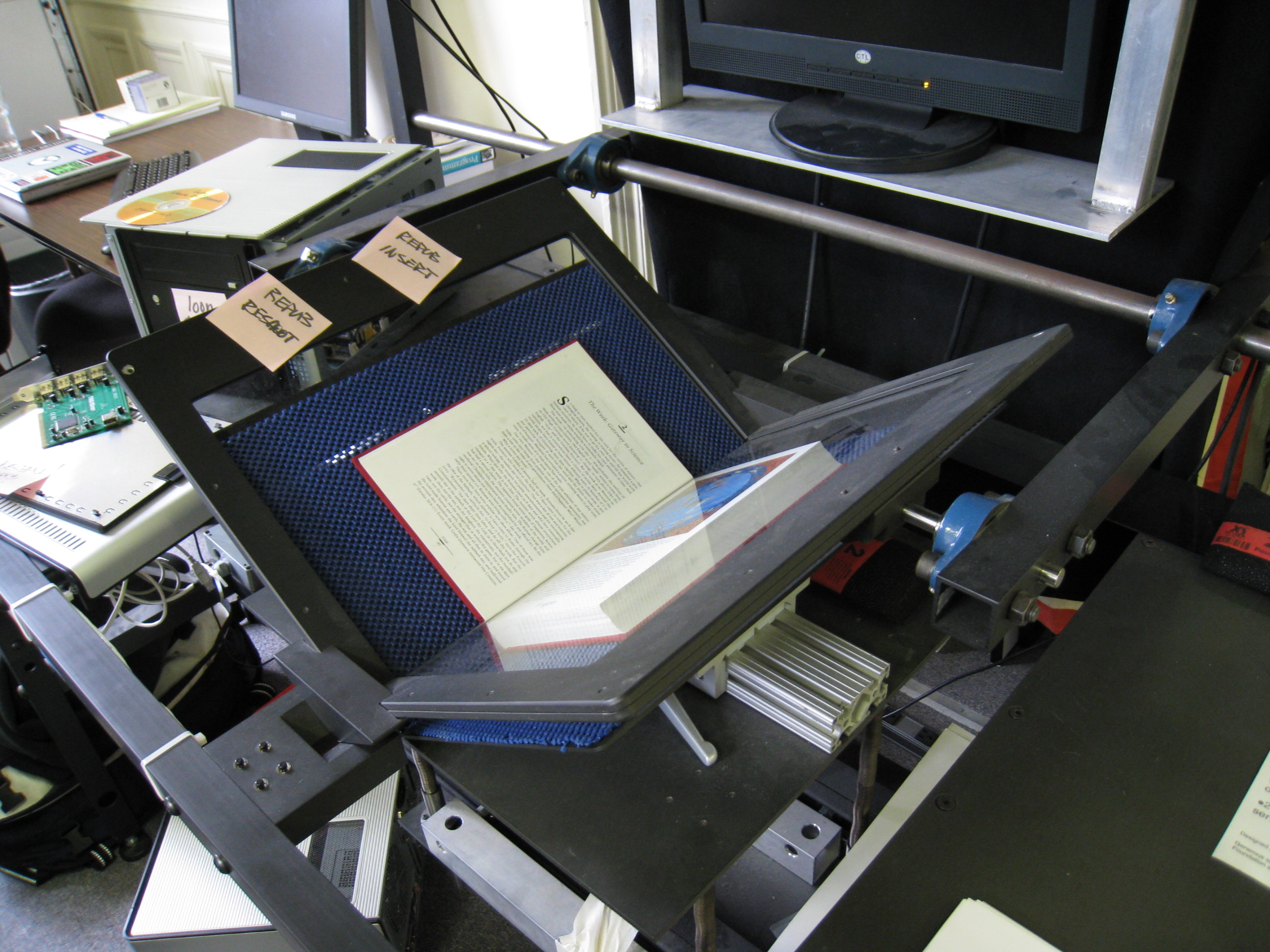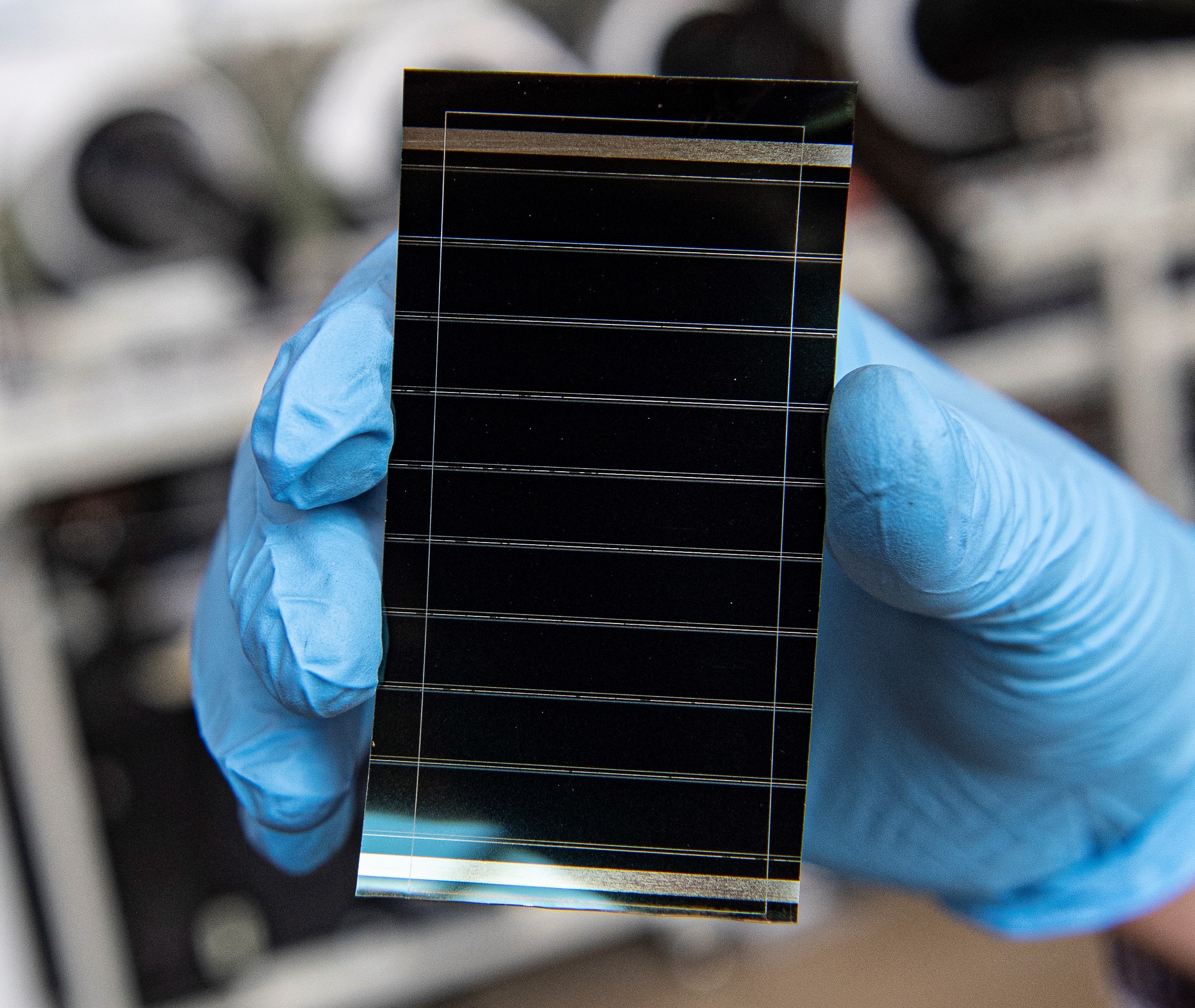|
Deep-level Transient Spectroscopy
Deep-level transient spectroscopy (DLTS) is an experimental tool for studying electrically active defects (known as charge carrier traps) in semiconductors. DLTS establishes fundamental defect parameters and measures their concentration in the material. Some of the parameters are considered as defect "finger prints" used for their identifications and analysis. DLTS investigates defects present in a space charge (depletion region, depletion) region of a simple electronic device. The most commonly used are Schottky diodes or p-n junctions. In the measurement process the steady-state diode reverse polarization voltage is disturbed by a voltage Pulse (signal processing), pulse. This voltage pulse reduces the electric field in the space charge region and allows free Charge carrier, carriers from the semiconductor bulk to penetrate this region and recharge the defects causing their non-equilibrium charge state. After the pulse, when the voltage returns to its steady-state value, the defect ... [...More Info...] [...Related Items...] OR: [Wikipedia] [Google] [Baidu] |
Charge Carrier
In solid state physics, a charge carrier is a particle or quasiparticle that is free to move, carrying an electric charge, especially the particles that carry electric charges in electrical conductors. Examples are electrons, ions and holes. In a conducting medium, an electric field can exert force on these free particles, causing a net motion of the particles through the medium; this is what constitutes an electric current. The electron and the proton are the elementary charge carriers, each carrying one elementary charge (''e''), of the same magnitude and opposite sign. In conductors In conducting mediums, particles serve to carry charge. In many metals, the charge carriers are electrons. One or two of the valence electrons from each atom are able to move about freely within the crystal structure of the metal. The free electrons are referred to as conduction electrons, and the cloud of free electrons is called a Fermi gas. Many metals have electron and hole bands. In ... [...More Info...] [...Related Items...] OR: [Wikipedia] [Google] [Baidu] |
Arrhenius Equation
In physical chemistry, the Arrhenius equation is a formula for the temperature dependence of reaction rates. The equation was proposed by Svante Arrhenius in 1889, based on the work of Dutch chemist Jacobus Henricus van 't Hoff who had noted in 1884 that the Van 't Hoff equation for the temperature dependence of equilibrium constants suggests such a formula for the rates of both forward and reverse reactions. This equation has a vast and important application in determining the rate of chemical reactions and for calculation of Activation energy, energy of activation. Arrhenius provided a physical justification and interpretation for the formula.Keith J. Laidler, Laidler, K. J. (1987) ''Chemical Kinetics'', Third Edition, Harper & Row, p. 42 Currently, it is best seen as an empirical relationship.Kenneth Connors, Chemical Kinetics, 1990, VCH Publishers It can be used to model the temperature variation of Mass diffusivity, diffusion coefficients, population of Vacancy defect, crystal ... [...More Info...] [...Related Items...] OR: [Wikipedia] [Google] [Baidu] |
Stress (physics)
In continuum mechanics, stress is a physical quantity that describes Force, forces present during Deformation (physics), deformation. For example, an object being pulled apart, such as a stretched elastic band, is subject to Tension (physics), ''tensile'' stress and may undergo Elongation (materials science), elongation. An object being pushed together, such as a crumpled sponge, is subject to Compression (physics), ''compressive'' stress and may undergo shortening. The greater the force and the smaller the cross-sectional area of the body on which it acts, the greater the stress. Stress has Dimension (physics), dimension of force per area, with SI Units, SI units of newtons per square meter (N/m2) or Pascal (unit), pascal (Pa). Stress expresses the internal forces that neighbouring particles of a continuous material exert on each other, while Strain (mechanics), ''strain'' is the measure of the relative deformation (mechanics), deformation of the material. For example, when a ... [...More Info...] [...Related Items...] OR: [Wikipedia] [Google] [Baidu] |
Inverse Laplace Transform
In mathematics, the inverse Laplace transform of a function F(s) is a real function f(t) that is piecewise- continuous, exponentially-restricted (that is, , f(t), \leq Me^ \forall t \geq 0 for some constants M > 0 and \alpha \in \mathbb) and has the property: :\mathcal\(s) = \mathcal\(s) = F(s), where \mathcal denotes the Laplace transform. It can be proven that, if a function F(s) has the inverse Laplace transform f(t), then f(t) is uniquely determined (considering functions which differ from each other only on a point set having Lebesgue measure zero as the same). This result was first proven by Mathias Lerch in 1903 and is known as Lerch's theorem. The Laplace transform and the inverse Laplace transform together have a number of properties that make them useful for analysing linear dynamical systems. Mellin's inverse formula An integral formula for the inverse Laplace transform, called the ''Mellin's inverse formula'', the '' Bromwich integral'', or the '' Fourier– Me ... [...More Info...] [...Related Items...] OR: [Wikipedia] [Google] [Baidu] |
Digitizing
Digitization is the process of converting information into a digital (i.e. computer-readable) format.Collins Dictionary. (n.d.). Definition of 'digitize'. Retrieved December 15, 2021, from https://www.collinsdictionary.com/dictionary/english/digitize The result is the representation of an object, image, sound, document, or signal (usually an analog signal) obtained by generating a series of numbers that describe a discrete set of points or samples. The result is called '' digital representation'' or, more specifically, a '' digital image'', for the object, and ''digital form'', for the signal. In modern practice, the digitized data is in the form of binary numbers, which facilitates processing by digital computers and other operations, but digitizing simply means "the conversion of analog source material into a numerical format"; the decimal or any other number system can be used instead. Digitization is of crucial importance to data processing, storage, and transmissio ... [...More Info...] [...Related Items...] OR: [Wikipedia] [Google] [Baidu] |
Laplace Transform
In mathematics, the Laplace transform, named after Pierre-Simon Laplace (), is an integral transform that converts a Function (mathematics), function of a Real number, real Variable (mathematics), variable (usually t, in the ''time domain'') to a function of a Complex number, complex variable s (in the complex-valued frequency domain, also known as ''s''-domain, or ''s''-plane). The transform is useful for converting derivative, differentiation and integral, integration in the time domain into much easier multiplication and Division (mathematics), division in the Laplace domain (analogous to how logarithms are useful for simplifying multiplication and division into addition and subtraction). This gives the transform many applications in science and engineering, mostly as a tool for solving linear differential equations and dynamical systems by simplifying ordinary differential equations and integral equations into algebraic equation, algebraic polynomial equations, and by simplifyin ... [...More Info...] [...Related Items...] OR: [Wikipedia] [Google] [Baidu] |
Lapl2
The Los Angeles Public Library (LAPL) is a public library system in Los Angeles, California, operating separate from the Los Angeles County Public Library system. The system holds more than six million volumes, and with around 19 million residents in the Greater Los Angeles area, it serves the largest metropolitan population of any public library system in the United States. The system is overseen by a Board of Library Commissioners with five members appointed by the mayor of Los Angeles in staggered terms, and operates 72 library branches throughout the city. In 1997 a local historian described it as "one of the biggest and best-regarded library systems in the nation." History The Los Angeles Library Association was formed in late 1872, and by early 1873, a well-stocked reading room had opened in the Downey Block at Temple and Main streets under the first librarian, John Littlefield. The original library consisted of two rooms. The larger room was called the "Book Room," an ... [...More Info...] [...Related Items...] OR: [Wikipedia] [Google] [Baidu] |
Electronic Band Structure
In solid-state physics, the electronic band structure (or simply band structure) of a solid describes the range of energy levels that electrons may have within it, as well as the ranges of energy that they may not have (called ''band gaps'' or ''forbidden bands''). Band theory derives these bands and band gaps by examining the allowed quantum mechanical wave functions for an electron in a large, periodic lattice of atoms or molecules. Band theory has been successfully used to explain many physical properties of solids, such as electrical resistivity and optical absorption, and forms the foundation of the understanding of all solid-state devices (transistors, solar cells, etc.). Why bands and band gaps occur The formation of electronic bands and band gaps can be illustrated with two complementary models for electrons in solids. The first one is the nearly free electron model, in which the electrons are assumed to move almost freely within the material. In this model, the ... [...More Info...] [...Related Items...] OR: [Wikipedia] [Google] [Baidu] |
Photon
A photon () is an elementary particle that is a quantum of the electromagnetic field, including electromagnetic radiation such as light and radio waves, and the force carrier for the electromagnetic force. Photons are massless particles that can move no faster than the speed of light measured in vacuum. The photon belongs to the class of boson particles. As with other elementary particles, photons are best explained by quantum mechanics and exhibit wave–particle duality, their behavior featuring properties of both waves and particles. The modern photon concept originated during the first two decades of the 20th century with the work of Albert Einstein, who built upon the research of Max Planck. While Planck was trying to explain how matter and electromagnetic radiation could be in thermal equilibrium with one another, he proposed that the energy stored within a material object should be regarded as composed of an integer number of discrete, equal-sized parts. To explain the pho ... [...More Info...] [...Related Items...] OR: [Wikipedia] [Google] [Baidu] |
Charge Carriers In Semiconductors
In solid state physics, a charge carrier is a particle or quasiparticle that is free to move, carrying an electric charge, especially the particles that carry electric charges in electrical conductors. Examples are electrons, ions and holes. In a conducting medium, an electric field can exert force on these free particles, causing a net motion of the particles through the medium; this is what constitutes an electric current. The electron and the proton are the elementary charge carriers, each carrying one elementary charge (''e''), of the same magnitude and opposite sign. In conductors In conducting mediums, particles serve to carry charge. In many metals, the charge carriers are electrons. One or two of the valence electrons from each atom are able to move about freely within the crystal structure of the metal. The free electrons are referred to as conduction electrons, and the cloud of free electrons is called a Fermi gas. Many metals have electron and hole bands. In some, the ... [...More Info...] [...Related Items...] OR: [Wikipedia] [Google] [Baidu] |
Perovskite Solar Cell
A perovskite solar cell (PSC) is a type of solar cell that includes a perovskite-structured compound, most commonly a hybrid organic–inorganic lead or tin halide-based material as the light-harvesting active layer. Perovskite materials, such as methylammonium lead halides and all-inorganic cesium lead halide, are cheap to produce and simple to manufacture. Solar-cell efficiencies of laboratory-scale devices using these materials have increased from 3.8% in 2009 to 25.7% in 2021 in single-junction architectures, and, in silicon-based tandem cells, to 29.8%, exceeding the maximum efficiency achieved in single-junction silicon solar cells. Perovskite solar cells have therefore been the fastest-advancing solar technology . With the potential of achieving even higher efficiencies and very low production costs, perovskite solar cells have become commercially attractive. Core problems and research subjects include their short- and long-term stability. Advantages The raw materials ... [...More Info...] [...Related Items...] OR: [Wikipedia] [Google] [Baidu] |




